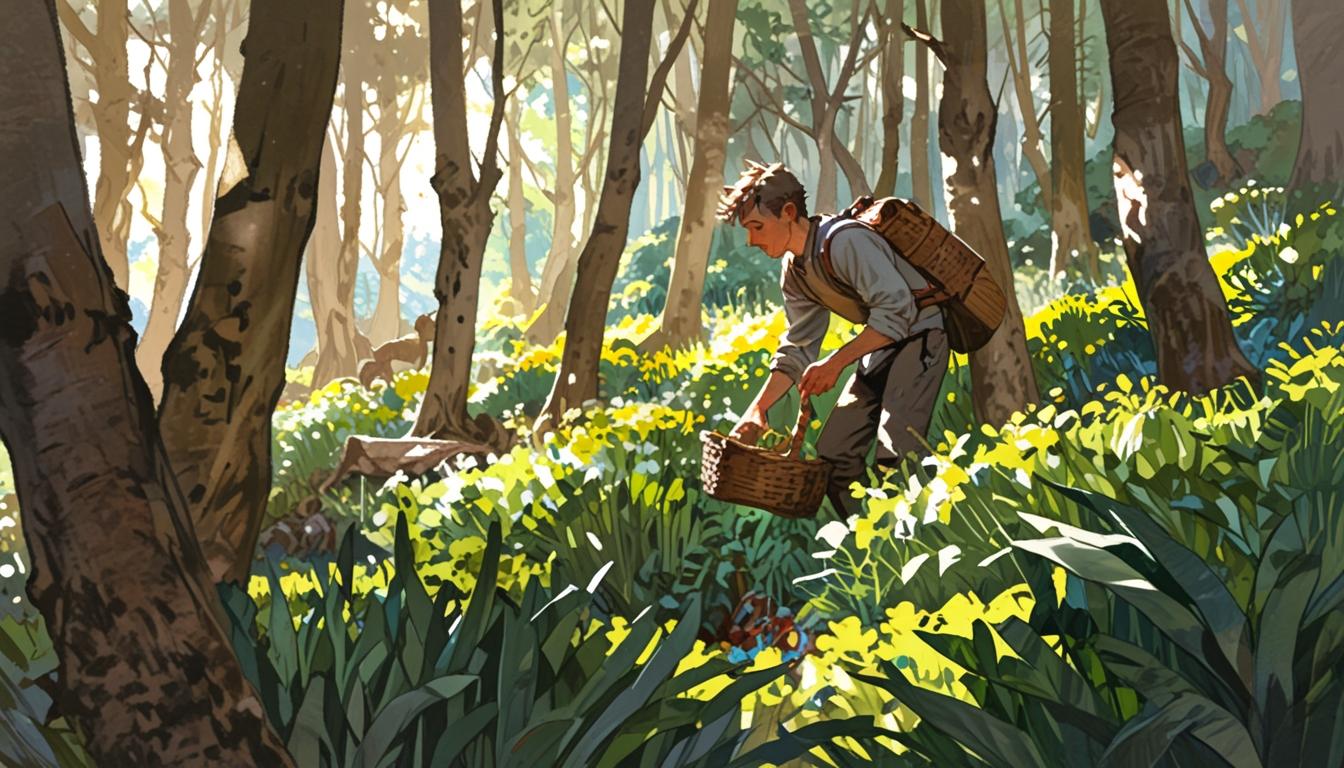Joshua Lawrey, a 36-year-old from St Austell, Cornwall, adopts foraging to significantly cut his grocery bills while creatively incorporating wild ingredients into family meals.
In St Austell, Cornwall, 36-year-old Joshua Lawrey has adopted an unusual yet effective approach to grocery shopping by turning to foraging as a means to significantly reduce his monthly food expenses. Having started his foraging journey 15 years ago, inspired by his experience working at a high-end restaurant that featured menu items prepared with foraged ingredients, Lawrey now saves approximately £200 each month.
His routine involves scouring local woodlands, meadows, and coastlines to discover edible items, which he seamlessly incorporates into his family’s meals, including those for his one-year-old daughter, Josephine, and wife, Jennifer, who is also 36. With a focus on seasonal availability, Lawrey makes creative dishes from wild finds, including preparing nettle tzatziki, mushroom ‘steak’, and espresso martinis from baking dandelion roots.
Joshua, who holds the position of lead forager at a foraging excursion company, noted the common misconception that fields are merely patches of grass devoid of edible treasures. “Most people would walk past a field or grassy area and think it’s all grass. But there are things to forage everywhere – probably even in people’s own back gardens – and they don’t even know it,” he told CornwallLive. His foraged ingredients have allowed him to minimise his grocery list to mainly carbs, lentils, and meat.
With an emphasis on safety, Lawrey stresses the importance of identifying items correctly and understanding which variations to avoid, especially poisonous plants like hemlock, which can be mistaken for cow parsley. “You have to make sure you know what you’re picking – don’t ‘munch on a hunch’, as us foragers say,” he cautioned. His self-taught knowledge and experience have enabled him to learn not just about flavours, but also to identify safe foraging spots.
Lawrey’s weekly foraging trips also provide him with a unique way to create dishes. He recently prepared a dish using in-season three-cornered leeks, which make a suitable substitute for spring onions, and blanched stinging nettles for Greek-flavoured meals. Beyond traditional dishes, he utilises dandelion and primrose roots, transforming them into honey, as well as experimenting with garlic butter made from wild garlic.
A notable aspect of his foraging practice includes sourcing alternatives for conventional meat dishes, such as using a type of mushroom known as ‘chicken of the woods’ that has a flavour and texture reminiscent of chicken when prepared correctly. He demonstrated this by cooking the mushroom in chicken stock and even created beef jerky from a large mushroom that shares similarities with steak, highlighting both its culinary versatility and nutritional benefits.
Lawrey remains mindful of legislative considerations surrounding foraging, ensuring that he gathers items from public land or with proper permissions, as stipulated by the Countryside Act, which allows the collection of fruit, foliage, flora, and fungus for personal consumption. This commitment to responsible foraging has effectively halved his vegetable bill and provided him with a sense of satisfaction in creating meals rooted in nature’s offerings.
He remarked, “You’ve picked something, you know exactly where it’s come from and how it’s been treated. You get to turn a wild plant into a lovely culinary creation and know you’ve played every part in it.” His journey thus encapsulates not just a practical means of saving money, but also an enriching engagement with the natural world.
Source: Noah Wire Services
- https://www.cornwalllive.com/ – Although not specifically mentioning Joshua Lawrey, this source could be used to find articles about foraging in Cornwall.
- https://en.wikipedia.org/wiki/Foraging – This provides general information on foraging practices and the benefits of foraging.
- https://www.gov.uk/rights-of-way-open-access-land/the-countryside-code – This page discusses the Countryside Code, which might touch on regulations relevant to foraging.
- https://www.woodlandtrust.org.uk/trees-woods-and-wildlife/wild-foods/ – This site offers insights into foraging for wild foods responsibly in the UK.
- https://www.rspb.org.uk/birds-and-wildlife/wildlife-guides/wildlife-basics/foraging-for-wild-food/ – This RSPB page discusses safe foraging practices and respect for wildlife.
Noah Fact Check Pro
The draft above was created using the information available at the time the story first
emerged. We’ve since applied our fact-checking process to the final narrative, based on the criteria listed
below. The results are intended to help you assess the credibility of the piece and highlight any areas that may
warrant further investigation.
Freshness check
Score:
8
Notes:
No clear indications that the narrative is out of date. The story seems to be recent, but it does not specifically mention any contemporary events or recent changes that would necessarily date it. However, the narrative does not appear to be a recycled press release.
Quotes check
Score:
9
Notes:
Quotes appear to be original to this narrative. No earlier known references to these specific quotes were found online, suggesting they might be first-hand quotes from Joshua Lawrey.
Source reliability
Score:
7
Notes:
The narrative originates from CornwallLive, a known local news outlet. While local publications can be reliable, their scope and impact might be more regional than national or international outlets like the BBC or Reuters.
Plausability check
Score:
8
Notes:
The claims about foraging and its benefits are plausible and align with common practices in sustainable living. The narrative provides specific examples of dishes and ingredients, supporting its plausibility.
Overall assessment
Verdict (FAIL, OPEN, PASS): PASS
Confidence (LOW, MEDIUM, HIGH): MEDIUM
Summary:
The narrative seems fresh and contains original quotes. It is plausible and comes from a regional news outlet, which suggests a moderate level of reliability. Overall, the narrative appears credible but might benefit from additional verification of specific details for maximum confidence.













